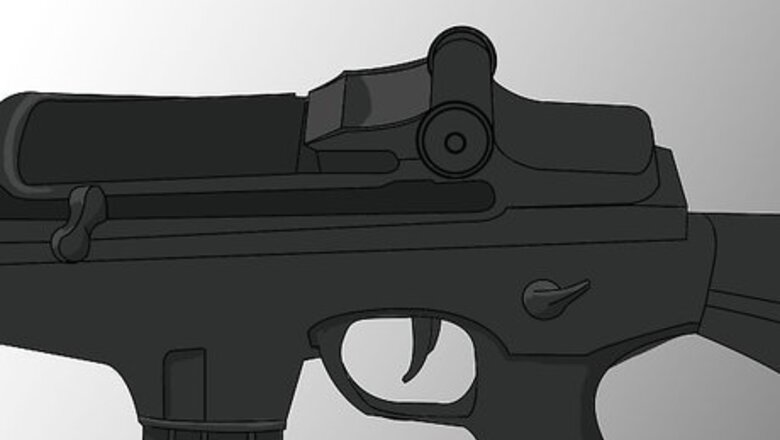
views
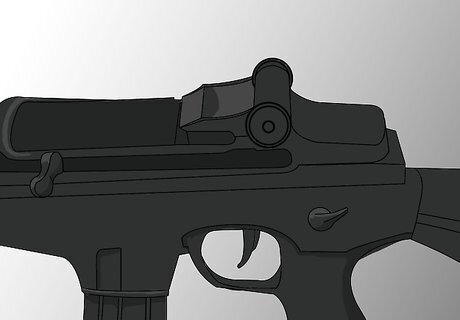
Locate the charging handle, operating rod, or similar device. You will have to operate this to put a cartridge in the chamber, clear stoppages and clear the weapon (make it safe).
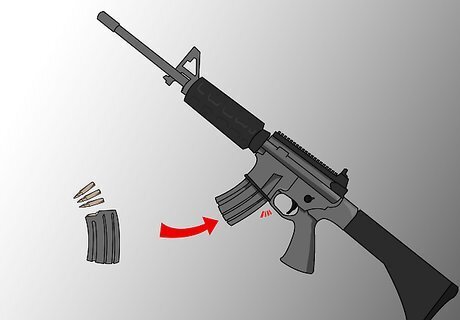
Locate the magazine (often improperly referred to as a clip). Load it with cartridges, and insert it into the magazine well. Make sure it latches, or locks into place.
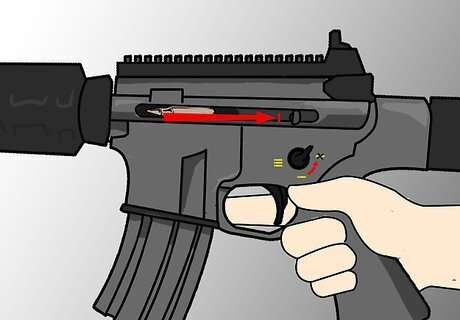
To make the weapon ready to fire, pull back the operating rod or equivalent. A round (cartridge) should feed up from the magazine. Release the handle, and the bolt should slam home, feed a round into the chamber, and lock into place. If you are not immediately about to fire, engage the safety catch. DO NOT touch the trigger until you are about to fire.

To clear the weapon (remove all ammunition), remove or empty the magazine. Next, retract the operation rod and inspect the chamber visually (look to see it is empty) and physically (put a finger into the chamber to check it is empty). It is usually a good idea to lock the bolt back if possible, to show at a distance that it is empty. Not all rifles are able to do this. AK/Kalashnikov rifles for instance cannot, though AR/AR15/M16-style ones can.
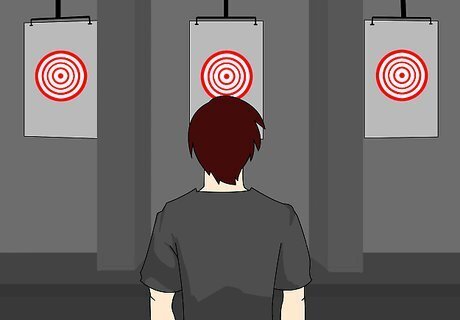
Check the direction of fire. If you are not sure of what is behind the target, do not fire. Ideally, you will be doing this at a shooting range, or a quarry with a high bank to shoot toward to stop stray bullets.
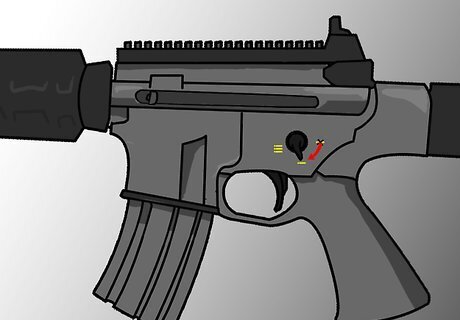
Release the safety. This will probably be a lever or button on the side of the action, but this varies considerably according to the rifle in question.
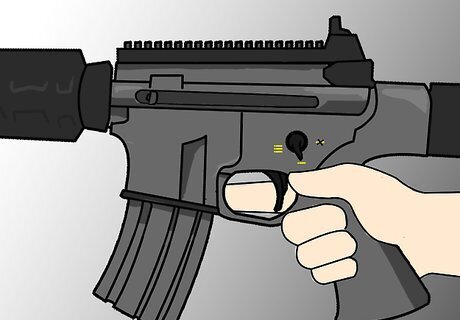
Grasp the grip (may look like a pistol grip); place your index finger on the side of the gun over the trigger. DO NOT touch the trigger until you are ready to fire.
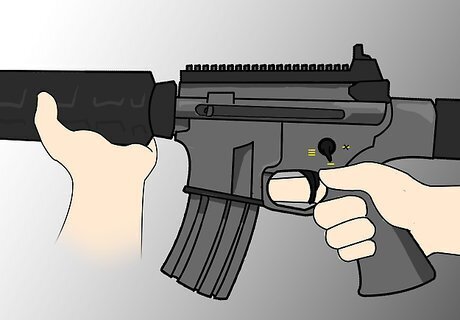
Hold the forestock (barrel area, usually covered in plastic or wood) of the gun with your 'off' hand or you can hold it close to the front end of the handguard for a more accurate shot. Note that the closer your off-hand is to the front of the barrel, the more steady your support will be. (support hand)(if you're right-handed use your left hand; if you're left-handed use your right hand).
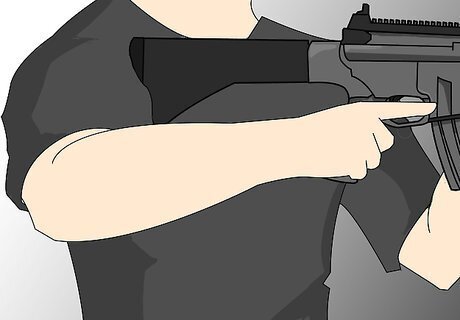
Bring the butt of the gun to the front of your shoulder, between your chest muscle (or breast) and the front ball of your shoulder. If this feels awkward, move your support hand down the barrel or towards you until it feels right.
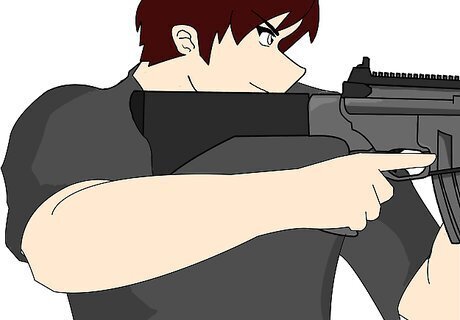
Tilt your head so the eye closest to the gun is looking straight down the top of the barrel. Place this eye where it can see past the rear sight but not to the sides of it (don't put your eye right next to the sight, but make sure you are not looking over the sight). If you are pulling the trigger with your right hand the left side of the butt/stock should be firmly pressed against your right cheek below the cheekbone (this is called a gun mold).

Focus on the front sight. You will want to put the front sight in the 6 o'clock position, in the center of your sight picture, aligned with your target.
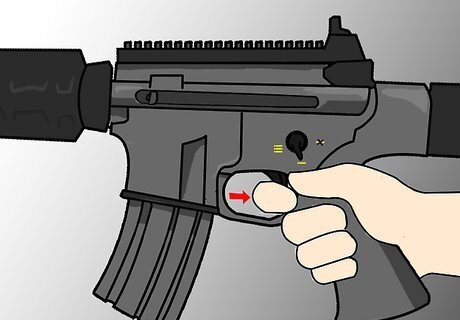
Squeeze the trigger slowly, without "dragging wood", that is, sliding it on the side of the grip.
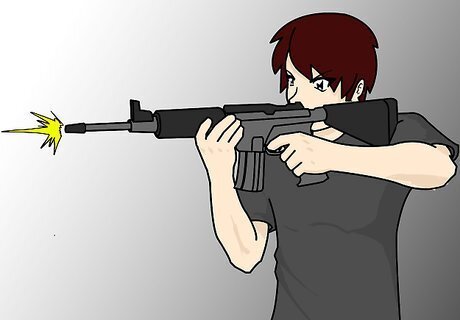
For optimal accuracy, fire only at a certain point in your breathing cycle, e.g. when you have just breathed out. U.S. Marine training tutorials advise that single shots should be taken while holding ones breath for no more than 3 seconds.
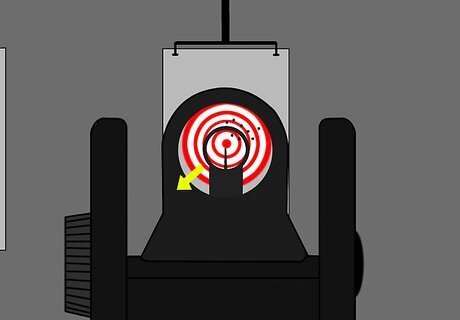
Check the target. If you determine that your round went right, correct to the left, if it goes left, correct right. This adjustment is called "windage". If you are shooting high, aim lower, or if you hit low, aim higher. This is known as elevation.
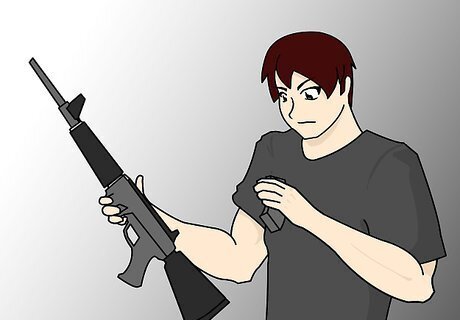
Once you are finished, clear the gun. Plan your next target or method.
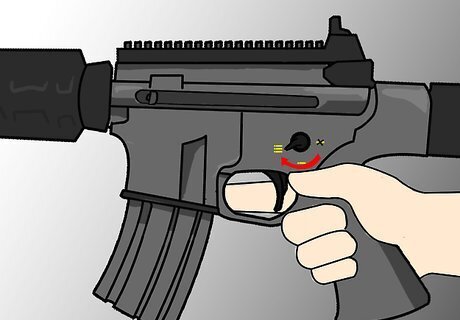
These guns are designed to put a bullet in the air in a short time, and if you are in a safe location, and have the ammunition, you may want to try some rapid-fire. Most legal versions of assault rifles in the United States are semi-automatic, so they only fire once each time the trigger is squeezed, but by holding the rifle and rapidly squeezing and releasing the trigger, you may be able to achieve a faster rate of fire.
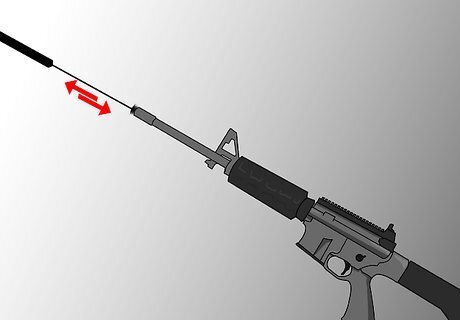
Take the gun down and clean it after it has cooled down. Whenever possible, always clean the barrel by inserting the cleaning rod into the breach (back) of the barrel, not the muzzle (front). Depending on how the gas system is designed to operate, you may or may not need to clean the gas tube. Check for cleaning instructions specific to you rifle before you start, and beware small pins and springs. A magnet can help to keep track of these small parts, which are more common on modern AR designs.


















Comments
0 comment